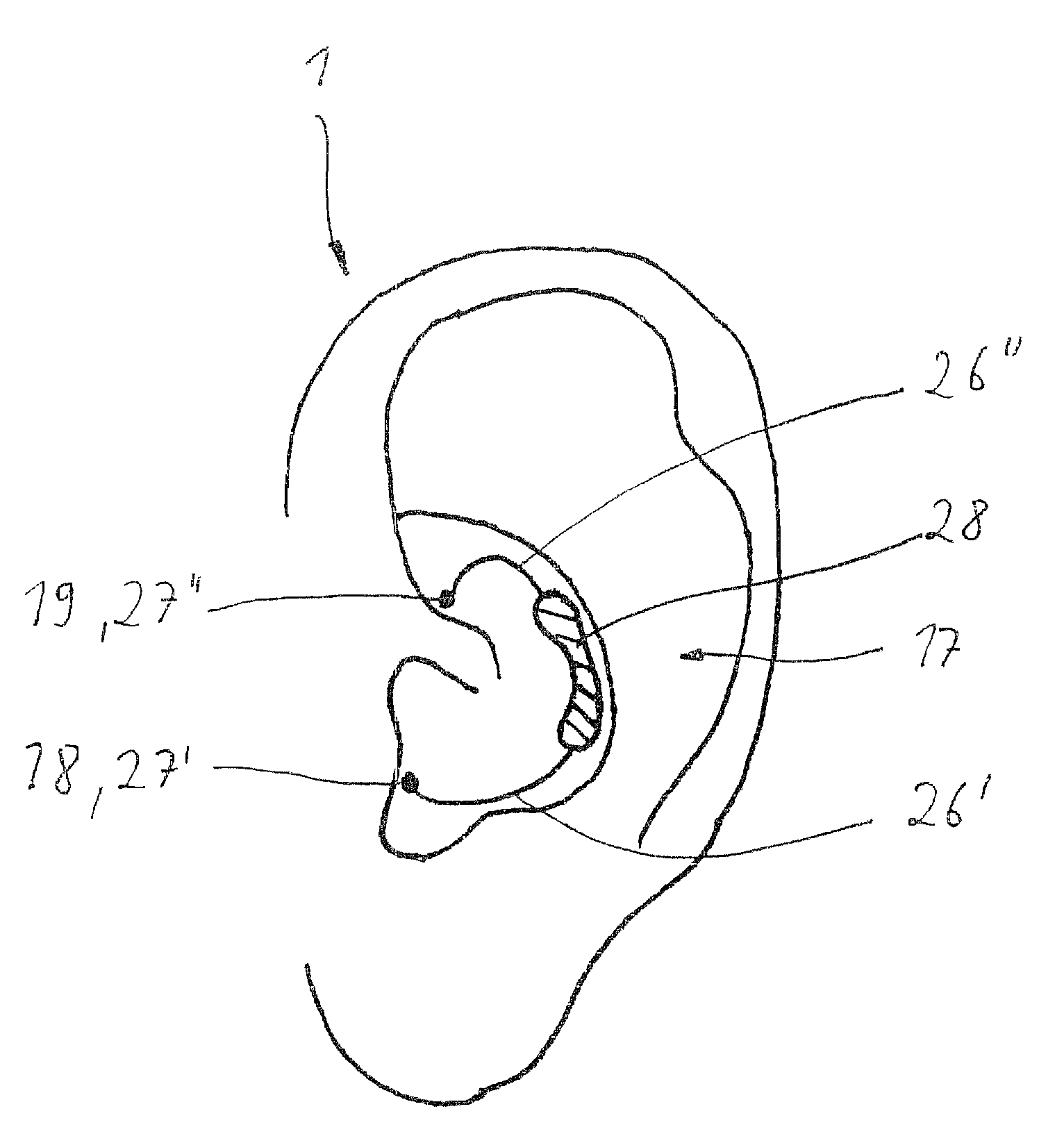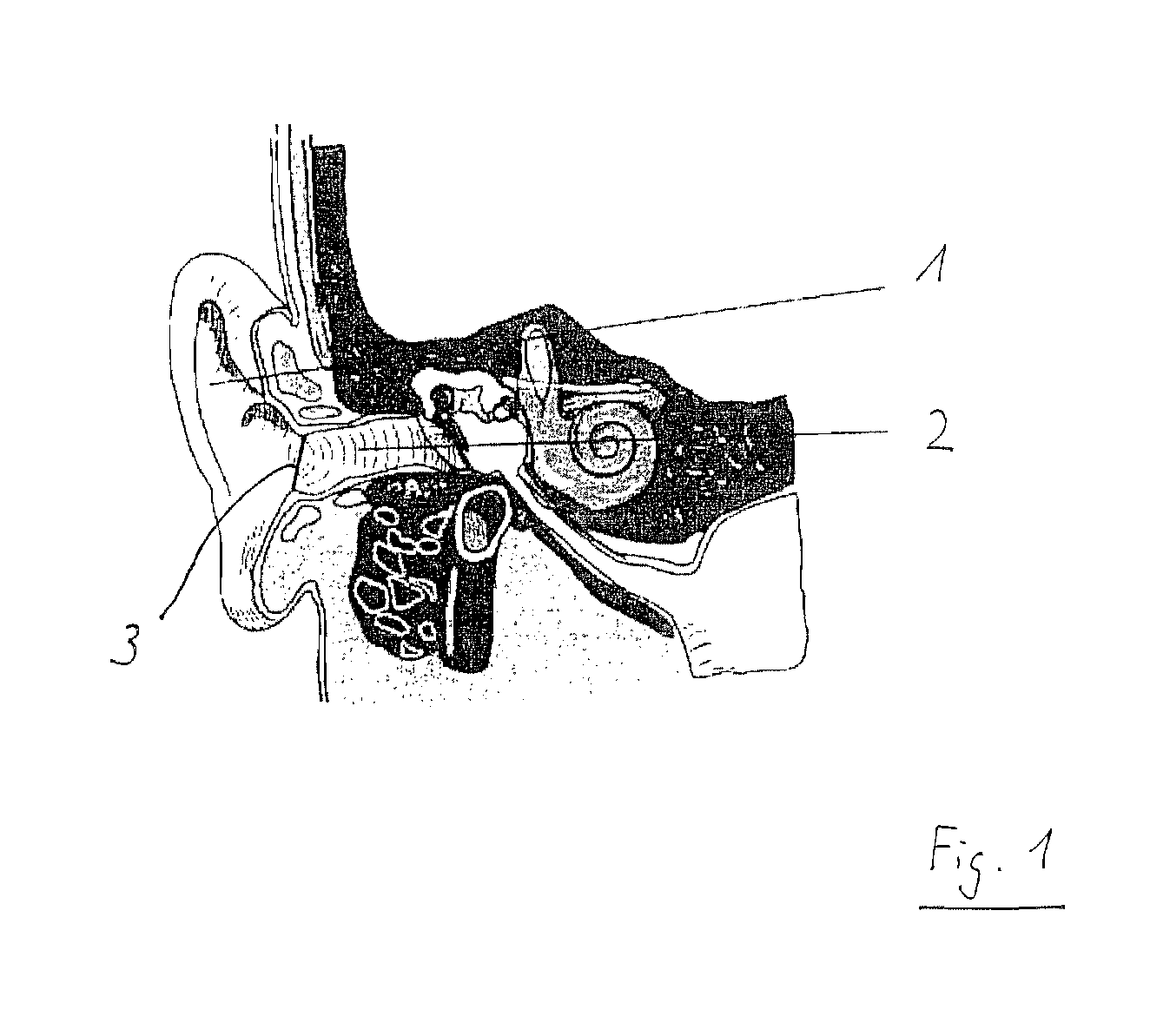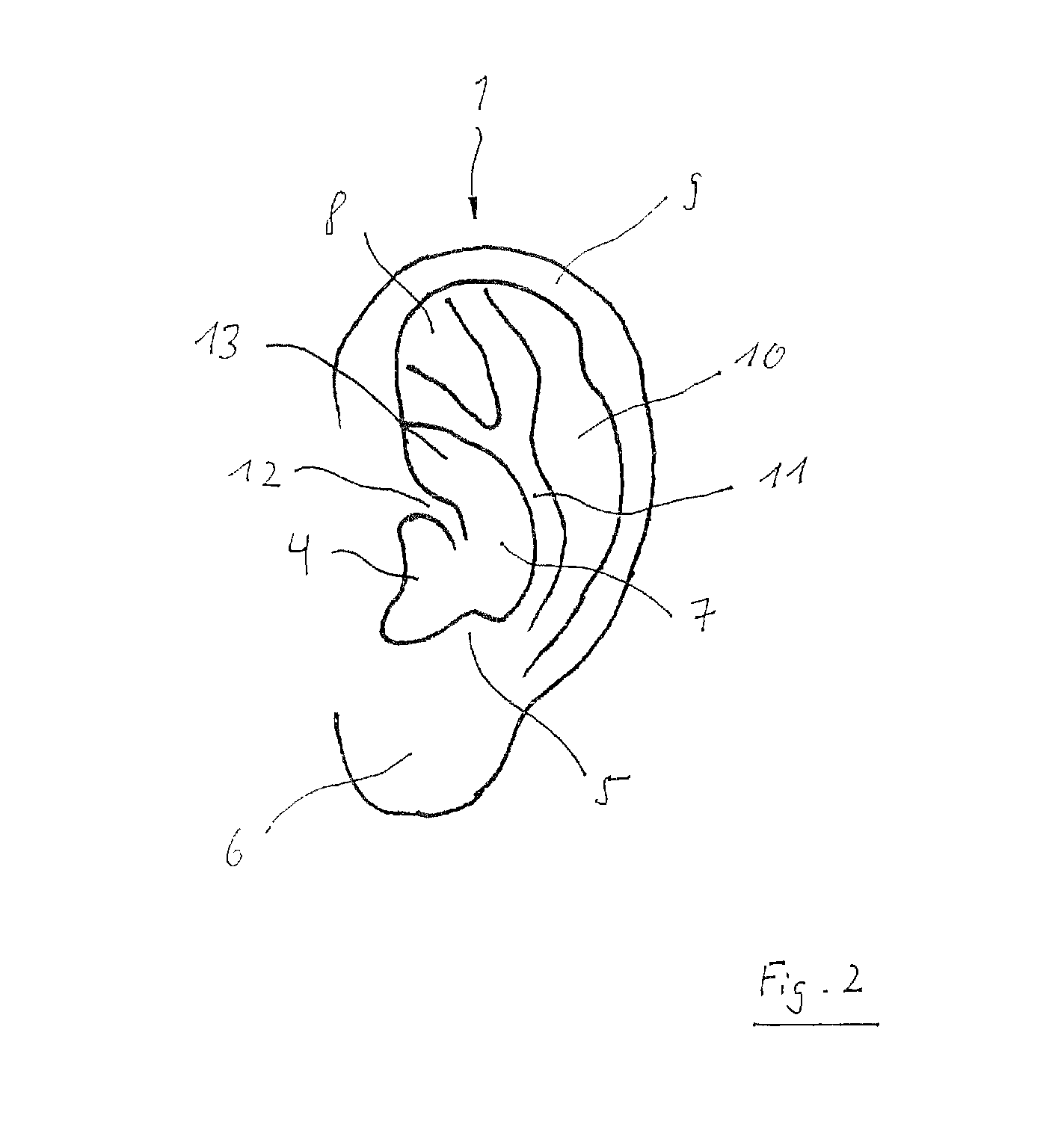Device for applying a transcutaneous stimulus or for transcutaneous measuring of a parameter
a technology for transcutaneous application and measurement, applied in the field of apparatus for transcutaneous application of stimulus or transcutaneous measurement of parameter, can solve the problems of high voltage, 80 volt and more, and the self-made apparatus is not suitable for accurate placement of electrodes on the external ear, etc., to achieve efficient and simple stimulation of the portion, efficient and simple measurement of various bioparameters, and safe for the patient
- Summary
- Abstract
- Description
- Claims
- Application Information
AI Technical Summary
Benefits of technology
Problems solved by technology
Method used
Image
Examples
Embodiment Construction
[0054]FIG. 1 gives an anatomical overview for differentiating between the pinna (external ear) and the external auditory canal. The outer ear is composed of two compartments: the external ear 1 and the external auditory canal 2. The anatomical boundary between the two units is the external auditory pore 3, the entrance to the external auditory canal 2.
[0055]The external ear has numerous anatomically named portions. For visualization, reference is made here to FIG. 2. In this figure, important anatomical structures of the external ear are defined. These structures become important when the innervation of the external ear is considered. Thus, the tragus 4 or its inner side is the only site on the external ear where portions of the vagus nerve run as auricular branches of the vagus nerve close under the surface of the skin. These nerve portions are suitable for electrical nerve stimulation by an apparatus of the invention for therapeutic and diagnostic purposes.
[0056]Indicated and numb...
PUM
 Login to View More
Login to View More Abstract
Description
Claims
Application Information
 Login to View More
Login to View More - R&D
- Intellectual Property
- Life Sciences
- Materials
- Tech Scout
- Unparalleled Data Quality
- Higher Quality Content
- 60% Fewer Hallucinations
Browse by: Latest US Patents, China's latest patents, Technical Efficacy Thesaurus, Application Domain, Technology Topic, Popular Technical Reports.
© 2025 PatSnap. All rights reserved.Legal|Privacy policy|Modern Slavery Act Transparency Statement|Sitemap|About US| Contact US: help@patsnap.com



